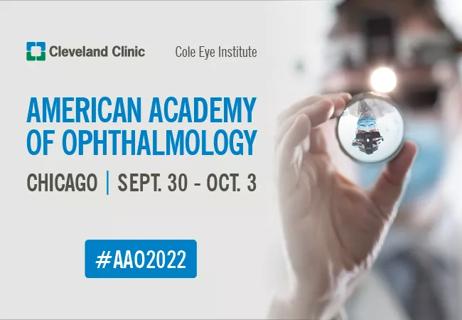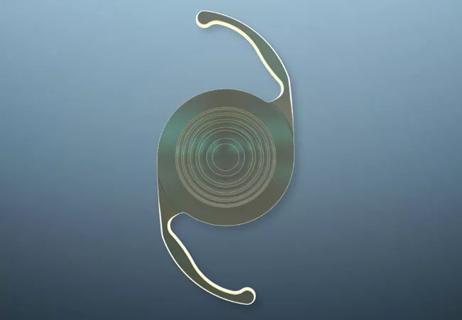Innovative work earns ASRS and Macula Society awards for Justis P. Ehlers, MD

The emergence and evolution of optical coherence tomography (OCT) have occurred alongside the medical career of vitreoretinal surgeon Justis P. Ehlers, MD — and in some cases, because of it.
Advertisement
Cleveland Clinic is a non-profit academic medical center. Advertising on our site helps support our mission. We do not endorse non-Cleveland Clinic products or services. Policy
As Director of the Tony and Leona Campane Center for Excellence in Image-Guided Surgery and Advanced Imaging Research at Cleveland Clinic Cole Eye Institute, Dr. Ehlers has helped reveal the unique phenotyping capabilities of OCT. That has triggered the development of multiple analytic platforms that can provide novel insights into disease features and differential therapeutic responses.
Dr. Ehlers’ work in OCT and imaging biomarkers during his 12-year career has produced nearly 200 peer-reviewed publications and a collection of patents and awards. In 2022, he won the Young Investigator Award from both the American Society of Retina Specialists (ASRS) and the Macula Society.
“My team is exploring how to use traditional imaging and advanced technology, like artificial intelligence, to better understand retinal disease, characterize imaging phenotypes and predict treatment response,” says Dr. Ehlers. “Our goal is precision medicine, where we tailor treatment for an individual based on an enhanced profile of their disease that we can identify through imaging.”
The first generation of OCT, time-domain OCT, which uses a moving reference mirror to slowly capture axial scans, began appearing in ophthalmology clinics in the 1990s. Far from the workhorse OCT is today, early OCT was used to evaluate only select eye conditions, such as vitreoretinal interface disorders. Spectral-domain OCT (SD-OCT), which provides faster scanning speed and higher axial resolution, became more prominent in the 2000s, when Dr. Ehlers was a resident at Wills Eye Hospital. It provided a whole new level of visualization, allowing ophthalmologists to see detailed retinal anatomy down to a micron level and in large volumetric data sets.
Advertisement
During his retina fellowship at Duke Eye Center from 2008 to 2010, Dr. Ehlers realized opportunities for innovation in imaging, such as with handheld SD-OCT.
“At that time, most eye clinics didn’t have a conventional SD-OCT system, much less a handheld device,” he says. “But one of my mentors at Duke [Cynthia A. Toth, MD] was transforming the field through innovation in OCT devices, initially developing a handheld system that enabled surgical imaging. As a result, during surgical procedures, we were visualizing the impact of surgical maneuvers on underlying tissues with newfound detail.”
OCT was becoming the backbone of decision-making in the clinic, so it was a natural step to use it in the OR, he adds. But while handheld SD-OCT was a huge leap forward, getting the images that a surgeon needed wasn’t so simple. Using the device required a learning curve, not to mention pausing the surgical procedure.
“To advance the technology, Dr. Toth began developing a microscope-integrated OCT system that would provide OCT imaging in line with the optics of the surgical microscope, offering real-time visualization of tissue manipulation,” says Dr. Ehlers. “As a fellow, I was incredibly fortunate to be part of the very first imaging that her lab conducted, using model eyes. We were one of only a few places in the world doing it at the time.”
In 2010, when Dr. Ehlers joined the Cole Eye Institute, he carried the flame passed to him from Dr. Toth. The institute had not yet begun using intraoperative OCT. However, Cole Eye Institute surgeon Peter K. Kaiser, MD, was a leader in using SD-OCT to diagnose and manage vitreoretinal diseases. Vitreoretinal surgeon Sunil K. Srivastava, MD, who joined Cleveland Clinic at the same time as Dr. Ehlers, also had a background in intraoperative OCT through his connection with the Duke team. The combination of these forces sparked the Cole Eye Institute’s intraoperative OCT research program, now with more than 3,000 enrolled patients.
Advertisement
Among the team’s efforts was the landmark DISCOVER study, the largest prospective microscope-integrated intraoperative OCT study to date. At three years, more than 800 patients had been enrolled. Successful imaging was obtained in 98% of cases, and the imaging findings had direct impact on surgical decision-making in over 40% of anterior segment cases and nearly 30% of posterior segment cases.
“The study demonstrated that intraoperative OCT was not only possible but useful in a significant portion of cases,” says Dr. Ehlers. “For example, in some cases when surgeons thought there were more membranes to peel, OCT revealed that the clinical objective had been met and the procedures could be concluded without additional manipulation.”
As the team learned more about using OCT during surgery, they realized an insufficiency in the software used to analyze the images.
“In the clinic, we look at things that change over days, weeks or years,” says Dr. Ehlers. “In the OR, we look at things that change immediately. The same software tools used in the clinic wouldn’t be effective for use in the OR. In addition, intraoperative OCT was identifying subtle, previously unrecognized tissue alterations, such as an expansion of the distance between the ellipsoid zone and retinal pigment epithelium [RPE].”
In response, the team started to develop new image analysis platforms to:
Advertisement
In a surprising twist, the software developed for intraoperative OCT turned out to be transformational for understanding clinical retinal diseases and the dynamics of therapeutic response. For example, rather than detect the mere presence of fluid in the eye of a patient with diabetic macular edema, the software could measure the volume of fluid across the macula and use those measurements to determine the cadence of recovery following a certain treatment. Ophthalmologists potentially could make treatment decisions based on fluid-distribution patterns, cadence of fluid response or high-resolution assessment of exudative volatility.
Revelations like that prompted a new era in the Ehlers team’s OCT research: biomarker discovery.
“We’ve pushed our software to start assessing different features of dry macular degeneration, wet macular degeneration and diabetic eye disease,” says Dr. Ehlers. “Our current research is focused on this technology pipeline and creating an opportunity for new clinical endpoints and personalized care. It’s an exciting area due to its potential to impact an incredibly large number of patients by helping us better understand their disease.”
In 2021 alone, the team presented more than 40 abstracts at national and international ophthalmology meetings and published more than 20 peer-reviewed articles, including these notable findings:
Advertisement
Next for Dr. Ehlers is the design and execution of a randomized clinical trial to validate the role of intraoperative OCT in patient care and to further explore opportunities provided by newer technologies, such as 3D visualization systems and new software platforms.
As for biomarker discovery, the work is just beginning — particularly with emerging therapeutics.
“For many of the diseases we manage on a day-to-day basis, investigational treatments are showing great promise,” says Dr. Ehlers. “There is a huge population of patients that can benefit from knowing if they are more or less likely to respond to these new drugs based on features we can assess on imaging.”
For example, Dr. Ehlers’ team has demonstrated the potential for quantifiable outer retinal integrity and ellipsoid zone integrity to be important therapeutic markers and endpoints in the investigational treatment of dry macular degeneration. They also could be prognostic features for disease progression and treatment response.
“These imaging biomarkers could be invaluable in determining which patients should be enrolled in a trial, identifying which patients might benefit from a specific treatment and providing more in-depth patient education,” he says. “Today, biomarkers and precision medicine are a key part of how the oncology field determines optimal treatment, and we hope to one day do the same in ophthalmology. Thanks to advances in technology, we believe that personalized retinal disease management is on the horizon.”
Advertisement

Cole Eye Institute imaging specialists are equal parts technician, artist and diagnostician

Speakers and topics for Booth 3254

Former internship year now includes specialization in eye care

The art of refractive cataract surgery

Is disorganization of retinal inner layers (DRIL) a useful prognostic indicator?

Seamless display, storage, sharing of diagnostic data is vital

New Cleveland Clinic system benefits doctors, patients

Evidence mounts that these diabetes and obesity drugs may protect eyes, not endanger them